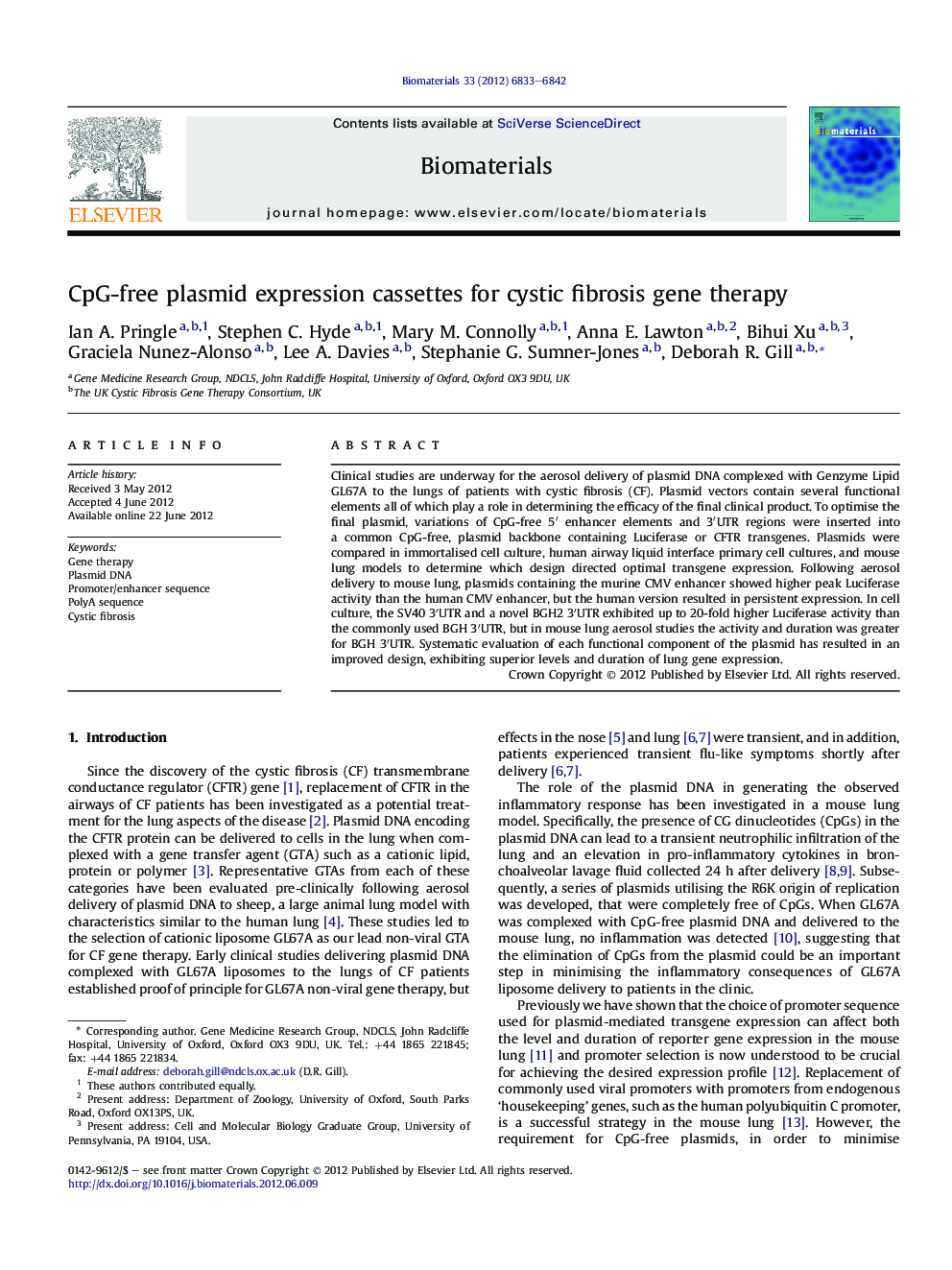| Article ID | Journal | Published Year | Pages | File Type |
|---|---|---|---|---|
| 10229482 | Biomaterials | 2012 | 10 Pages |
Abstract
Clinical studies are underway for the aerosol delivery of plasmid DNA complexed with Genzyme Lipid GL67A to the lungs of patients with cystic fibrosis (CF). Plasmid vectors contain several functional elements all of which play a role in determining the efficacy of the final clinical product. To optimise the final plasmid, variations of CpG-free 5â² enhancer elements and 3â²UTR regions were inserted into a common CpG-free, plasmid backbone containing Luciferase or CFTR transgenes. Plasmids were compared in immortalised cell culture, human airway liquid interface primary cell cultures, and mouse lung models to determine which design directed optimal transgene expression. Following aerosol delivery to mouse lung, plasmids containing the murine CMV enhancer showed higher peak Luciferase activity than the human CMV enhancer, but the human version resulted in persistent expression. In cell culture, the SV40 3â²UTR and a novel BGH2 3â²UTR exhibited up to 20-fold higher Luciferase activity than the commonly used BGH 3â²UTR, but in mouse lung aerosol studies the activity and duration was greater for BGH 3â²UTR. Systematic evaluation of each functional component of the plasmid has resulted in an improved design, exhibiting superior levels and duration of lung gene expression.
Related Topics
Physical Sciences and Engineering
Chemical Engineering
Bioengineering
Authors
Ian A. Pringle, Stephen C. Hyde, Mary M. Connolly, Anna E. Lawton, Bihui Xu, Graciela Nunez-Alonso, Lee A. Davies, Stephanie G. Sumner-Jones, Deborah R. Gill,
